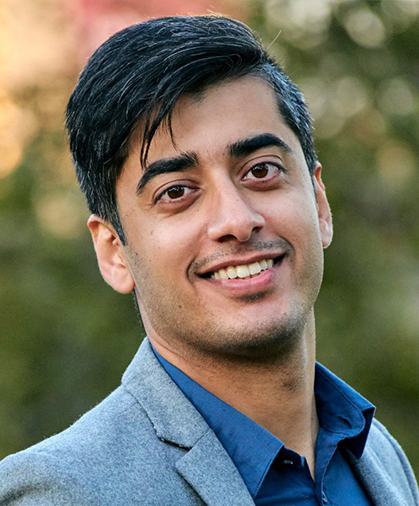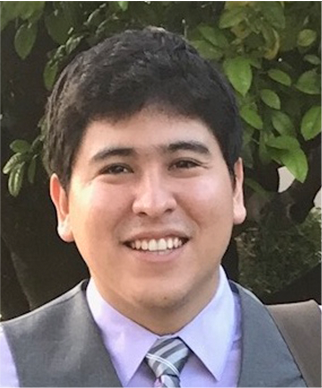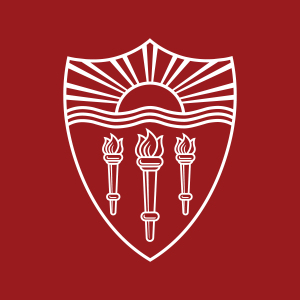
Yasser Khan and his group were awarded funding from the Google Research Scholar Program to work on Racial Bias Correction in Oximetry using Google’s Skin Tone Framework.

Constantine Sideris, USC Viterbi assistant professor of electrical and computer engineering, received a 2023 Young Investigator Program (YIP) Award from the Office of Naval Research. One of only 25 researchers nationwide to receive the award, Sideris will receive a grant of $750,000 over a three-year period to support his work.
Read the entire press release on the USC Viterbi website: https://viterbischool.usc.edu/news/2023/01/constantine-sideris-one-of-25-researchers-honored-by-office-of-naval-research/
The publication entitled “Electrical Stimulation Induced Current Distribution in Peripheral Nerves Varies Significantly with the Extent of Nerve Damage: A Computational Study Utilizing Convolutional Neural Network and Realistic Nerve Models” was awarded Best Paper in Artificial Computation at IWINAC 2022.
The publication may be accessed here:
https://link.springer.com/chapter/10.1007/978-3-031-06242-1_52

Kimberly K. Gokoffski, MD, PhD, assistant professor of clinical ophthalmology, has received a $198,000 grant from USC’s Strategic Directions for Research Award (SDRA) program.
The grant will allow her to pursue research related to her project titled “Novel, Large-Field Gradient, Electrical Stimulator to Accelerate Peripheral Nerve Regeneration into Split Thickness, Skin Graft Donor Sites.”
Read the entire press release on KSOM website.

The PRIDE program is a NIH/NHLBI supported program that further enhances the skillsets of junior faculty members to use ancestry and gender in interpretation of omics datasets when making inferences about susceptibility to pulmonary diseases such as pulmonary fibrosis. This is a relevant area which aligns well with Dr. Asante’s earlier efforts to model the metabolomics of ARDS patients, who have pulmonary fibrosis as well. This training will broaden his understanding and facilitate is application for grants to advance his career.
The link to the program is below:
https://medschool.cuanschutz.edu/pride-agold?access_token=7MOBGbz%2f1kio0vQSH1AZRbe4fyiAdZ7U
Press releases highlight our experimentally validated advanced computer model that reproduces the shapes and positions of millions of nerve cells in the eye, as well as the physical and networking properties associated with them. Focusing on models of nerve cells that transmit visual information from the eye to the brain, we identified ways to potentially increase clarity and grant color vision to future retinal prosthetic devices.
At NSF.GOV.
At the National Eye Institute: Computer model fosters potential improvements to ‘bionic eye’ technology.
At SciTechDaily: Advanced computer model improves bionic eye.
At consalud.es (spanish).
The Argus II is a microscopic supercomputer implanted into people who have visually impaired eyes. The premise of the device is to help them recognize shapes and patterns, giving them the ability to partially see once more.
The Argus II works by stimulating the nerve fiber without disturbing its neighboring cells. The team is testing an electrical stimulation waveform that could add colors and hue temperature to the mix.
Researchers fine tune a ‘bionic eye’ for those who lost their sight…

The US Army Research Office has awarded a 3- year grant to Dr. Jean-Marie C. Bouteiller to develop efficient multiscale models of the nervous system to study the effects of cholinergic modulation.

The Association for Research in Vision and Ophthalmology (ARVO) has awarded the Joanne G. Angle Travel Grant to Javad Paknahad to attend and present at the ARVO 2021 Annual Meeting, May 1 – May 7, 2021.

A ballot for the election of President-Elect and four members to the Administrative Committee of the IEEE Antennas and Propagation Society was issued on 14 August, 2020. The returned ballots have been counted and Professor Gianluca Lazzi has been elected President of the IEEE Antennas and Propagation Society Regions 1 – 6 (One-Year Term, 1 January 2021 – 31 December 2021).
Isaac Asante, Assistant Professor of Research Ophthalmology and Jean-Marie Bouteiller, Assistant Professor of Research in Biomedical Engineering join ITEMS. Isaac Asante brings his expertise in translational/ clinical drug development, biomarker development, regulatory affairs, molecular biology and bioanalytical techniques, PK/PD modeling, Pharmaceutics, Oncology, Clinical Pharmacology, Good Clinical Practice (GCP), and Pharmacovigilance. Jean-Marie Bouteiller brings his expertise in computational neuroscience, research and development in the fields of in-silico drug discovery for pathologies of the nervous system, and the development of multiscale modeling methodologies for both academia and industrial partners.

Manuel Monge receives the NIH/NIBIB Trailblazer Award to support his work on MRI-Inspired Electronics.
The Trailblazer R21 Award is an opportunity for New and Early Stage Investigators to pursue research programs of high interest to the NIBIB at the interface of the life sciences with engineering and the physical sciences. A Trailblazer project may be exploratory, developmental, proof of concept, or high risk-high impact, and may be technology design-directed, discovery-driven, or hypothesis-driven. Importantly, applicants are expected to propose research approaches for which there are minimal or no preliminary data.

Prof. Gianluca Lazzi has been elected Fellow of the National Academy of Inventors (NAI). Quoting the NAI, “the NAI Fellows Program highlights academic inventors who have demonstrated a spirit of innovation in creating or facilitating outstanding inventions that have made a tangible impact on quality of life, economic development and the welfare of society.” “To date, NAI Fellows hold more than 41,500 issued U.S. patents, which have generated over 11,000 licensed technologies and companies, and created more than 36 million jobs. In addition, over $1.6 trillion in revenue has been generated based on NAI Fellow discoveries.” Press release and complete list of newly elected Fellows can be found at: https://academyofinventors.org/press-releases/ .

The Integrated Medical Electronics Lab has officially opened at the University of Southern California, joining the Ming Hsieh Department of Electrical Engineering and the new Institute for Technology and Medical Systems Innovation!

ATOMS selected as one of 10 articles that exemplify interdisciplinary research published in NatBME during its first year! link

Our work on ATOMS has been published in the Fall edition of the Solid-State Circuits Magazine.
Emami A & Monge M. MRI-Inspired High-Resolution Localization for Biomedical Applications: Artificial Nuclear Spins on a Chip.IEEE Solid-State Circuits Magazine 10, 34-42 (2018).
article | ieee
17 for 2017: The Year in News at Caltech

Our work on localization of microscale devices inside the body using principles of nuclear magnetic resonance has just been featured on the cover of Nature Biomedical Engineering!
Monge M, Lee-Gosselin A, Shapiro MG*, Emami A*. Localization of microscale devices in vivo using addressable transmitters operated as magnetic spins.Nature Biomedical Engineering 1, 736-744 (2017).
Manuel Monge receives the 2017 Charles and Ellen Wilts Prize, awarded by the Department of Electrical Engineering at Caltech for outstanding independent research in electrical engineering leading to a PhD
Caltech EE News, Wilts Prize
Manuel Monge receives the 2017 Demetriades – Tsafka – Kokkalis Prize in Biotechnology, awarded by the Division of Engineering and Applied Science at Caltech to a PhD candidate for the best thesis, publication, or discovery in the field of Biotechnology or Related Fields
Caltech EAS News, The Demetriades – Tsafka – Kokkalis Prizes
Institute for Technology and Medical Systems Innovation University of Southern California
USC Healthcare Center 4 (HC4)
1450 San Pablo St, Los Angeles, CA 90033
CALL US AT 323.865.0823